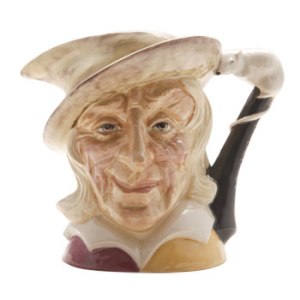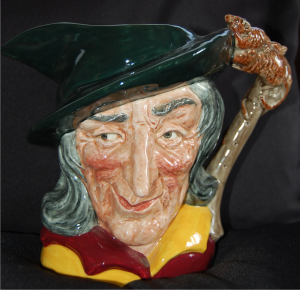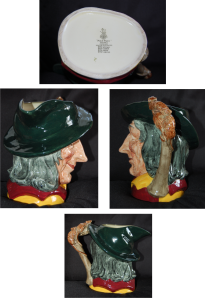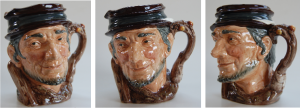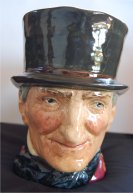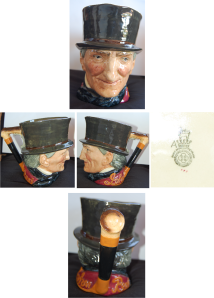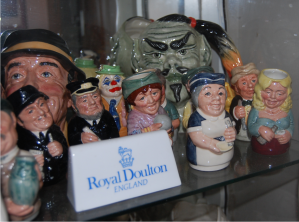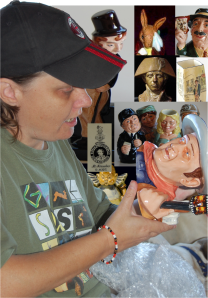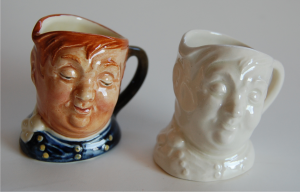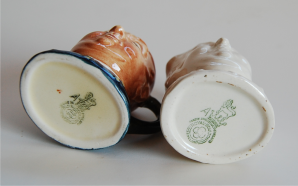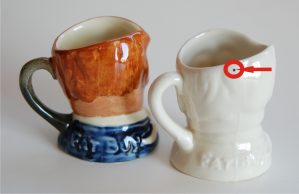The Pied Piper was one of the very first Royal Doulton character jugs I purchased on an on-line auction, the main attraction for me was firstly his character filled face and secondly the pipe and rats handle. I mean just look at that face, granted, I’m not sure that I would have followed him into the great unknown as a child, but as an adult, I find his character filled face very intriguing.
This Royal Doulton character jug was designed by Geoff Blower and was issued in 3 sizes:
– D6403 Large 1954 – 1981
– D6462 Small 1957 – 1981
– D6514 Mini 1960 – 1981
The original prototype was modelled with only 1 rat on the handle and in a different colourway, as above, but was adapted to the more familiar version featured below:
A poem by Robert Browning, The Pied Piper Of Hamelin is based on an old legend from a town in Brunswick. The town is crawling with rats, and the mayor and city elders decide to enlist the services of a stranger to rid them of the vermin for a fee of one thousand guilders. The stranger earns his fee by playing his pipe so beautifully that the rats follow the music and drown in the River Weser. The piper’s fee however goes unpaid, so the strange piper plays again, but this time all the children of the town are enchanted by his beautiful music and they follow him never to be seen again.
For more on Royal Doulton please visit royaldoultonguide.com
